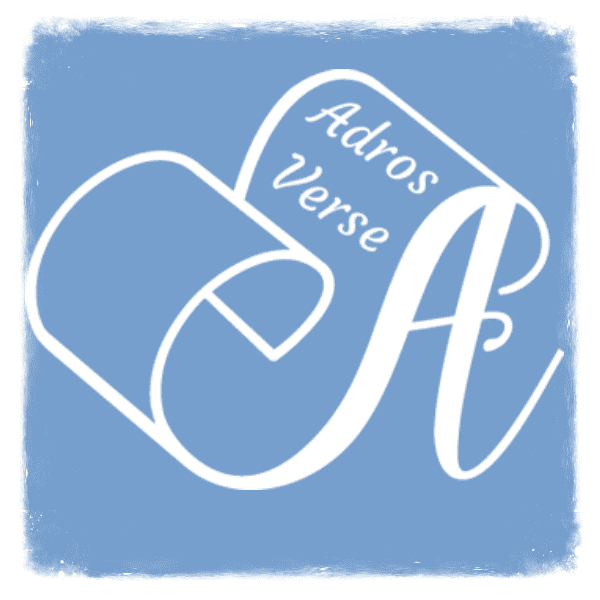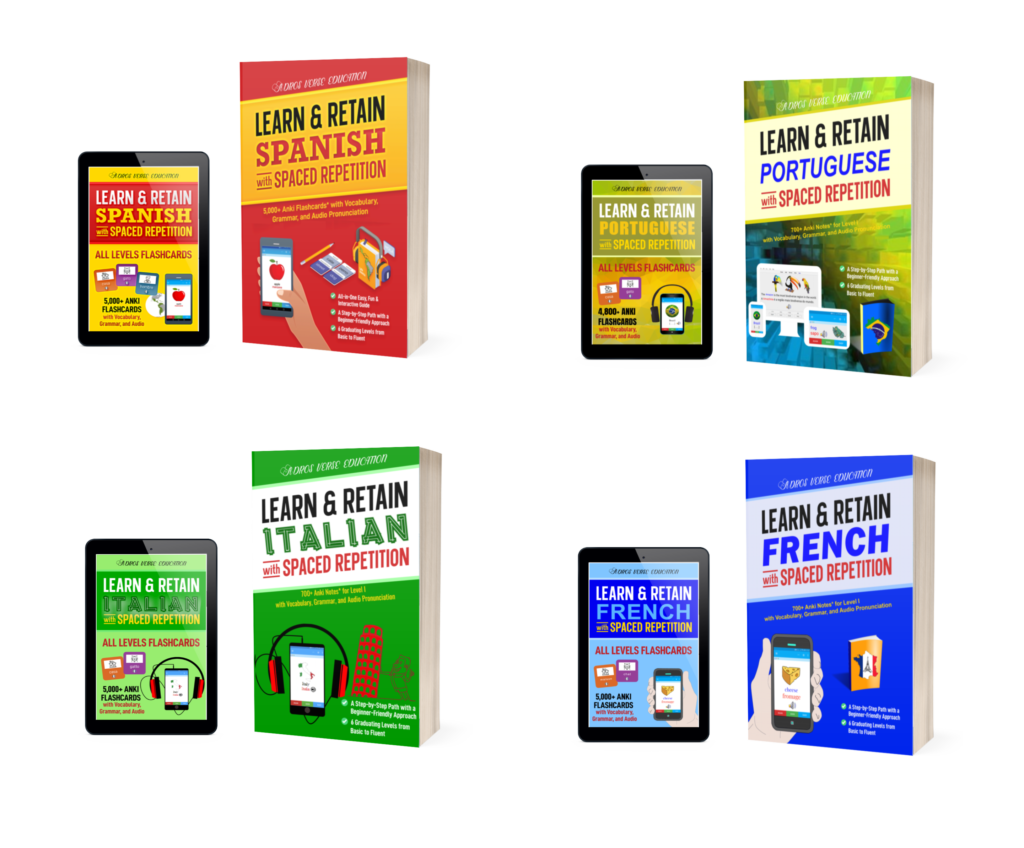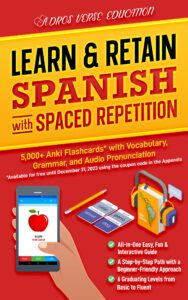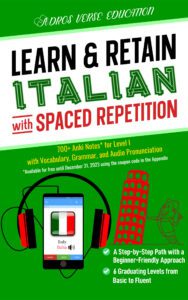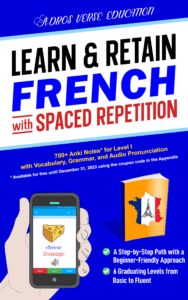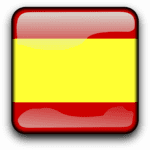1. Alphabet & Pronunciation
1.1. Syllable Stress
2. Similarities to English
2.1. Plural
2.2. Negation
2.3. Punctuation & Written Accents
3. Cardinal Numbers
4. Subject Personal Pronouns
5. Present Indicative Tense I
6. The Articles
7. Prepositions
8. Interrogative Pronouns & Adjectives
9. Basic Phrases
1. Gender of Nouns & Adjectives
2. Present Indicative Tense II – Irregular Verbs
3. The Verb “To Be”: “Ser” vs. “Estar”
4. Future Tense
5. Possessive Adjectives & Pronouns
6. Demonstrative Adjectives & Pronouns
7. Object Personal Pronouns
7.1. Combining Direct & Indirect Object Personal Pronouns
8. Relative Pronouns
9. Ordinal Numbers I
10. Times & Seasons
1. Verbs Like “Gustar”
2. “Por” vs. “Para”
3. The Verb “To Know”: “Saber” vs. “Conocer”
4. Indefinite Adjectives & Pronouns
5. Present Progressive Tense
6. Present Perfect Tense
7. Special Uses of “Haber” & “Tener”
8. Telling Time & Describing Weather
9. Adverbs
9.1. The Adverbs “Tan,” “Solo,” “También,” “Tampoco,” “Vez,” & “Veces”
9.2. Other Adverbs & Adverbial Phrases
10. Directions
1. Degrees of Comparison: Comparatives & Superlatives
2. Past Tense: Preterite vs. Imperfect
3. Conjunctions
4. Reflexive Pronouns & Verbs
5. The Verb “Soler”
6. Time Expressions: Todavía, Aún, Ya, Hace, Acabar, & Desde
7. Present Subjunctive Tense I
8. Personal “a”
9. Future Perfect Tense
1. Irregular Verbs in The Preterite
2. Imperative Mood & Giving Commands
3. Expressions of Pain & Illness
4. Simple Conditional Tense
5. Present Subjunctive Tense II
6. Perfect Subjunctive Tense
7. Imperfect Subjunctive Tense
8. Past & Conditional Progressive Tenses
9. Interjections
1. Ordinal Numbers II
2. “Would/Should/Could Have …”
3. Pluperfect Indicative Tense
4. Pluperfect Subjunctive Tense
5. Use of “Aunque,” “Si Bien,” and “A Pesar de”
6. Verbs of Change
7. Reflexive Passive, Impersonal, & Accidental “Se”
8. Diminutives & Augmentatives
9. Use of “Vos” in Some Spanish-Speaking Countries
10. Uses of “Ojalá” in Spanish
There are some commonly used expressions in Spanish to describe pain, symptoms, and illness. We will discuss three categories of these expressions:
1. Using the verb “doler” (to hurt) to express pain in a particular body part.
For example:
| Me duele la cabeza. | My head hurts. |
| A mi mamá le duele la mano. | My mom’s hand hurts. |
| Nos duelen las piernas. | Our legs hurt. |
| ¿Te duelen los dientes? | Do your teeth hurt? |
The expression “me duele” literally means “it hurts me.” Thus, “me duele la cabeza” literally means “the head hurts me,” which we translate as “my head hurts.”
2. Using the verb “tener” (to have) to describe symptoms, including pain.
For example:
| Tengo fiebre. | I have a fever. |
| Tenemos resaca. | We have a hangover. |
| Tuvimos estrés. | We had stress. |
| Ella tiene dolor de estómago. | She has a stomachache. |
3. Using the verb “estar” (to be) to describe symptoms.
For example:
| Estoy mareado. | I am dizzy. |
| Él está cansado. | He is tired. |
| ¿Estás resfriado? [1] | Do you have a cold? |
[1] The verb “tener” can also be used to say: “¿Tienes un resfriado?” (Do you have a cold?).
Next: Simple Conditional Tense
Other lessons in Level V:
